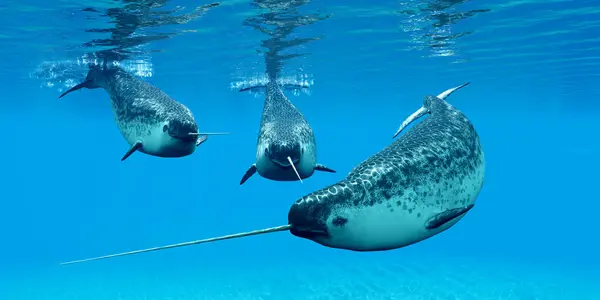The ocean covers more than 70% of our planet. It is a mysterious world filled with incredible life. Marine animals are vital for the Earth's health. They provide food and even help produce the air we breathe. Many of these creatures have famous nicknames based on how they look or act. For instance, the Orca is known as the "Killer Whale," and the colourful Puffin is often called the "Clown of the Ocean." Every creature, big or small, has a special role to play in the deep blue sea. However, do you know which animal is known as the unicorn of the sea? This animal is timid and lives in the freezing waters of the Arctic. It is famous for its long, spiral tooth that projects from its head, like a magical horn. In this article, we'll take a look at this fascinating swimmer and learn the truth behind its nickname.
ALSO READ| Which Animal Is Known As The Best Rain Detector?
Which Animal Is Known As The Unicorn Of The Sea?

The animal known as the "unicorn of the sea" is the Narwhal. Its scientific name is Monodon monoceros, which translates to "one tooth, one horn". These unique whales live exclusively in the icy waters of the Arctic Ocean, primarily around Canada, Greenland, and Russia. Their most defining physical characteristic is a long, spiral tusk that projects from their head. This tusk is actually a sensitive, enlarged tooth that can grow up to 10 feet long. Narwhals are carnivores and feed on Greenland halibut, polar cod, squid, and shrimp.
FOR YOU| Which Animal Is Known As The Architect Of The Animal World?
10 Lesser-Known Facts About Narwhals
- The "horn" is actually a canine tooth that grows through the upper lip.
- The tusk is filled with millions of nerve endings to sense changes in the water.
- Usually, only male narwhals grow tusks, though about 15% of females have small ones.
- Very rarely, a narwhal can grow two tusks instead of one.
- They are born blue-grey, turn black as juveniles, and become white as they get older.

- They are among the deepest divers in the ocean, reaching depths of 1,500 metres.
- Narwhals suck their prey into their mouths like a vacuum; they don't chew.
- The name "Narwhal" comes from the Old Norse word for "corpse" because of their pale, mottled skin.
- They have no dorsal fin on their back, which helps them swim easily under sea ice.
- Despite looking hard, the tusk can bend about one foot without breaking.
Conclusion

Narwhals are small, toothed whales, scientifically called Monodon monoceros, which means "one tooth, one horn" in Latin. The reason behind this name is that narwhals are born with two canine teeth, one of which (in males) grows into a horn. With an estimated population of 123,000 mature individuals, these animals are classified as Least Concern (LC) on the IUCN Red List and are not endangered.
These whales live in the Arctic Ocean, mainly in the Atlantic sector, but they have also been recorded in the Pacific sector. Their largest numbers live around Canada, Greenland, and eastern Russia. They usually migrate from under the ice in winter to inshore waters in spring and coastal waters in summer.
IN CASE YOU MISSED| List of Animals With Long Tongues
Another fascinating fact about these whales is that they are at the top of the food chain and play an essential role in the overall health of their environment. They help to regulate prey species populations and provide a traditional source of food for Arctic indigenous communities. Additionally, these whales live longer, with the oldest individuals reaching up to 125 years.

The purpose of a narwhal's tusk has long puzzled scientists. Charles Darwin proposed that male narwhals use their tusks to compete for mates, a theory that modern researchers largely support. Since only male narwhals have tusks, it is unlikely that they serve essential survival functions, such as hunting or feeding. Interestingly, the presence of nerve endings on the tusk's surface suggests it also serves a sensory purpose.
In medieval times, narwhals were hunted for their valuable tusks, which were often sold as unicorn horns, earning the species the nickname 'unicorn of the sea'. Narwhals usually travel in groups of 15 to 20 individuals, but gatherings can sometimes swell to hundreds or even thousands. They rely on sound to communicate, navigate their environment, hunt, and perceive their surroundings.
WHAT'S NEXT| List of 5 Rarest Marine Animals Ever Found
Comments
All Comments (0)
Join the conversation